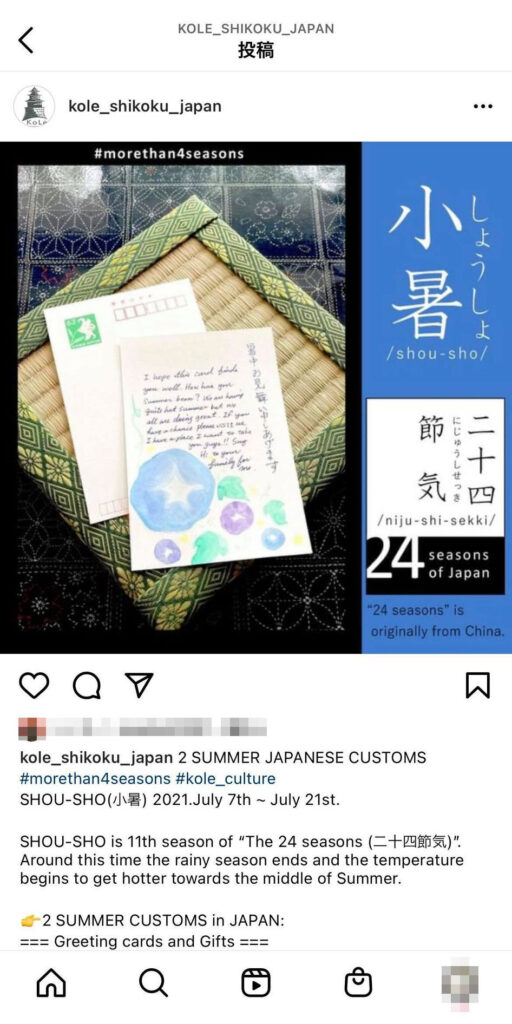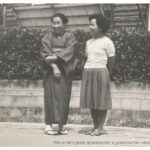This day is 210th day from RISSHUN(立春) the first day of spring. This day and 10 days after the day are known as “Watch out for typhoons” days. We will explain what to expect, what not to do when your stay in Japan was hit by typhoons.
- What is TYPHOON?
- What happens when a TYPHOON comes?
- How many days will you get affected by it?
- 2 Japanese words which are better for you to recognize.
- What is NIHYAKU-TO-O-KA (二百十日) ?
What is TYPHOON?
It is a mature tropical cyclone that develops a little bit north of the equator, the northwestern pacific, South & Eastern Asian side of the Pacific Ocean.
It travels north towards Japan. It goes along or across Japan. The speed could be from a bicycle running really fast like an athlete to a car driving on the street. Usually when it reaches the North part of Japan, like Hokkaido, it weakens enough that it is no longer called a Typhoon.
Typhoons have strong winds and heavy rain. The recent problem is the size of typhoons seems to be getting bigger over a decade.
WHAT HAPPENS WHEN A TYPHOON COMES?
- Strong wind
- Strong rain
- flooding
- landslides
- WIND & RAIN
- Low Pressure
- Public transportation stops
- Railways
- Airways
- Bus & Taxi
- Tourists attractions & Some businesses close
It really depends on what part of Japan you will be in at the time. The Pacific side gets more damage than the Sea of Japan side. South & Southwest of Japan will face typhoons when it is still strong enough but by the time the typhoons reach the North it gets weaker. The damage or what to watchout for are different between seaside and Mountain side.
However, when the typhoon approaches Japan, most parts of Japan get affected by it.
It means your travel plans could be affected.
Strong wind
The wind randomly blows during the typhoon is near or at the area you are in. The strongest wind will blow up so many things in the area. As little as empty plastic planters from neighbours. As serious as roof tiles or/and roofing of some factories.
Strong rain
While the typhoon is traveling along Japan, we get long and strong rain. It causes so much trouble on both the near water areas and the mountain side.
—flooding: Rivers, lakes or ponds could overflow. But what people forget about is manhalls in towns. When the amount of rain which the drainage system of towns cannot take, manhalls in the town pop up open and water flows into the streets.
—landslides: 75% of Japanese land is hills and mountains. When heavy rain is poured in a short period, the risk of landslides gets higher.
WIND & RAIN:
The combination of wind & rain, trees and electric poles could be knocked down. Also some old unhibitate wooden houses could fall down.
Low Pressure
Typhoons are basically massive low pressure. Barometric pressure will be way lower than usual. Some people are physically affected by it, some don’t. BUT the water surface WILL be affected by it.
Sea level will be higher than usual, because of the barometric pressure during the typhoons. If the typhoon gets close during hightided hours, sea water may cause flooding. The waves are higher than usual because of the wind.
Public transportation stops
As you can easily imagine, public transportation will not run depending on how close and strong typhoons are.
—Railways:
Usually, railways will announce the typhoon schedule in advance at least a day ahead. But unexpected early damage could happen at the end of the lines, like landslides or floodings. In that case, they cannot announce it prior.
—Airways:
The airways will be pretty much the same as railways. They will announce the schedule in advance, if they can. However…. if you were already in the air and your destination airport was not in the condition for landing, your flight might land in a different airport.
—Bus & Taxi:
It depends on the companies and how bad the typhoon is. But it is safer for you to think they won’t run.
Tourists attractions & Some businesses close
Some because of the safety, some because their staff cannot come in, a lot of facilities will be closed.
NOTE:
Typhoons are not just strong rain & wind. So, please try not to get out of your accommodation until the typhoon passes your area.
How many days will you get affected by it?
It really depends on the size & speed of typhoons but 3 days, I would say. A day before the typhoon gets closest to the area you are in, the day it is closest then a day after.
After a typhoon passes, depending on the damage the typhoon left, some facilities might be closed or/and it might take some time for the public transportation to recover to its normal schedule.
2 Japanese words which are better for you to recognize.
When you are in Japan, if you notice a typhoon on TV weather forecasts, I advise you to check the weather forecast every day to check how fast it is traveling. When it gets close enough to your area, there are 2 Japanese words you need to know.
警報 (kei-hou) & 注意報 (chuui-hou)
When the typhoon is close enough, you will notice the map of Japan will be colored by yellow and red by prefectures on weather forecasts. Red colored area means 警報 (kei-hou) is issued, Yellow colored area means 注意報(chuui-hou) is issued. As you can imagine, red is more dangerous than yellow.
警報 (kei-hou) : alert
注意報 (chuui-hou): advisoly
Both have different kinds like wind, rain, flooding, high waves, lightning & thunders….etc.
If your area is under the effect of an alert, it is safer for you not to go anywhere unless you are advised to evacuate.
If you have an internet connection and a smartphone, you could check the situation in English or your language. Still, if you can recognize these 2 words, you will get what it means even from the TV you happened to see when you are on the go.
What is NIHYAKU-TO-O-KA (二百十日) ?
This is the 210th day from RISSHUN (立春). It is a really important day for farmers and fishermen. Because from the experiences of generations before generations, they know this is the day to be careful with typhoons.
For rice farmers, the typhoon season comes before their harvest season. They have to watch out for the typhoon, otherwise their hard work from the spring will wash down or be knocked over by the typhoon.
For fishermen, once upon a time before we had a weather forecast, a lot of fishermen died going to the sea without knowing the typhoon was coming.
Today, the prediction of typhoons by the Japan Meteorological Agency is pretty accurate. So, farmers and fishermen work along with the weather forecast. NIHYAKU-TO-O-KA is the vestiges of when nobody could predict the weather.
NIHYAKU-HATSUKA (二百二十日)
10 days after NIHYAKU-TO-O-KA is also the day people watch out for typhoons.
Message from our curator:
If you are coming to Japan for your holiday, I assume you plan & book everything a few months ahead. Once typhoons were developed it could reach to Japan within a week or a couple weeks. It means there is no way you could predict if your holiday would/would not be affected by it when you are booking your flights.
My intention of this article is NOT telling you not to come around this season. I feel terrible if I hear your holiday was affected by typhoon. But there is one weather that only people experienced the typhoon can get exists. It is called “TAIHUU-IKKA (台風一過)”. It is the super sunny blue sky day that you get a day after the typhoon. The contrast of terrifying storm and the blue sky with the strong sunlight amaze me every single time.
As I mentioned in the article, how bad the typhoon affects people’s life really depends on which part of Japan you are in. For example, Kagawa, where we are, is known as the lightest damage we get from typhoon. Still dangerous compare to non-typhoon days, but not as sever as Okinawa or Kyushu, sometimes even Tokyo.
I would like you to stay SAFE. Knowing what could happen during the typhoon is important. If you could avoid the season, that is the safest way to go. BUT if you are an experienced Japan traveler, or unfortunate traveler who happened to be here when a typhoon was passing by, stay safe and take the typhoon as an experience that no other tourists can get.
The founder & head curator
SATOKO
Would you like to know which season we are in NOW?

Follow our Social Media Accounts of YOUR CHOICE!
What do you get from our Social Media Accounts but you don’t get here?
- “More than 4 seasons” posts are posted with DATEs of each seasons each year. Because these dates slightly changes every year.
- You get “post notice” is the Social Media of your choice has the function.
- If you also follow ” #morethan4seasons “. You will have the archive only about “More than 4 seasons” posts.
HANDY!!! Don’t you think?







Comments by satoko